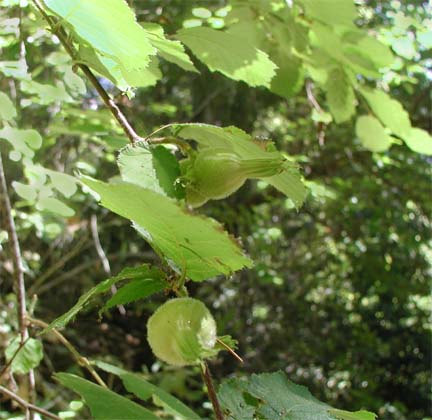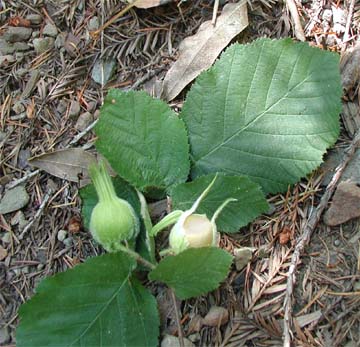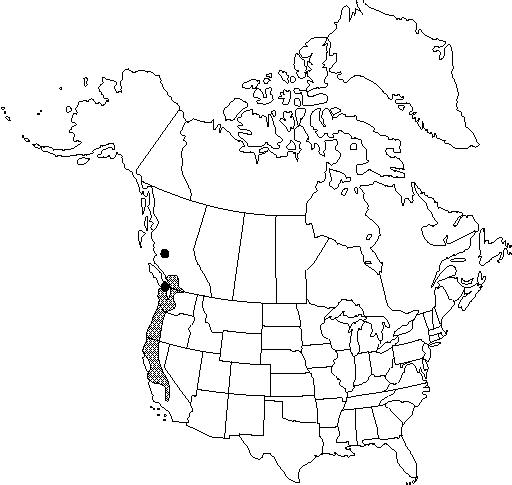
|
California Hazel
Corylus cornuta var. californica
First posted June 26, 2004 Last updated
June 26, 2004

| The California hazel is a decidious
shrub that grows to about 10 to 30 feet. It is found
along the California coast, from the Cazadero region
north to southern Canada. The leaf is alternate,
have rounded bases, and sharply pointed tips. Their
softness and fine double-toothed margins are characteristic
features It flowers from April to May, so by the
time you are at camp, you will see it as at right:
the flowers have fallen off and the nuts are not
yet ripe. They are contained in a hairy husk. The
hairs are rather stiff and likely to be prickly
when you pick the nuts, but are not painful, though
you may think them bothersome. The California hazel
likes dappled sunshine, so you will find it at the
edges of the forest. It prefers some moisture, but
will be found with the Douglas-fir, uphill of the
Austin Creek Road. This specimen was found on the
right side of the logging road into our upper acres,
about 300 yards from Austin Creek Road. |

California hazel,
photographed along the logging road into our upper
acres,
June 26, 2004. |
| Here you can notice the leaf shape
and serrated margin. The undisturbed fruit is at
left. The one on the right has been partly peeled,
to reveal the developing nut inside. It is shaped,
sized, and marked like a filbert. The nut is edible
and said to be quite good, tasting like a hazelnut
or a filbert. They ripen in mid to late autumn.
According to the US
Forest Service, the nuts are a staple
food of the Steller's Jay, chickaree, and squirrels. |
 |

California hazel distribution

References
There is not much written on the California hazel.
McGill
University's Biodiversity website.
Ibiblio's
webpage on the California
hazel give just a bit of information.

Acknowledgments
The distribution diagram is from McGill University.

|

|

